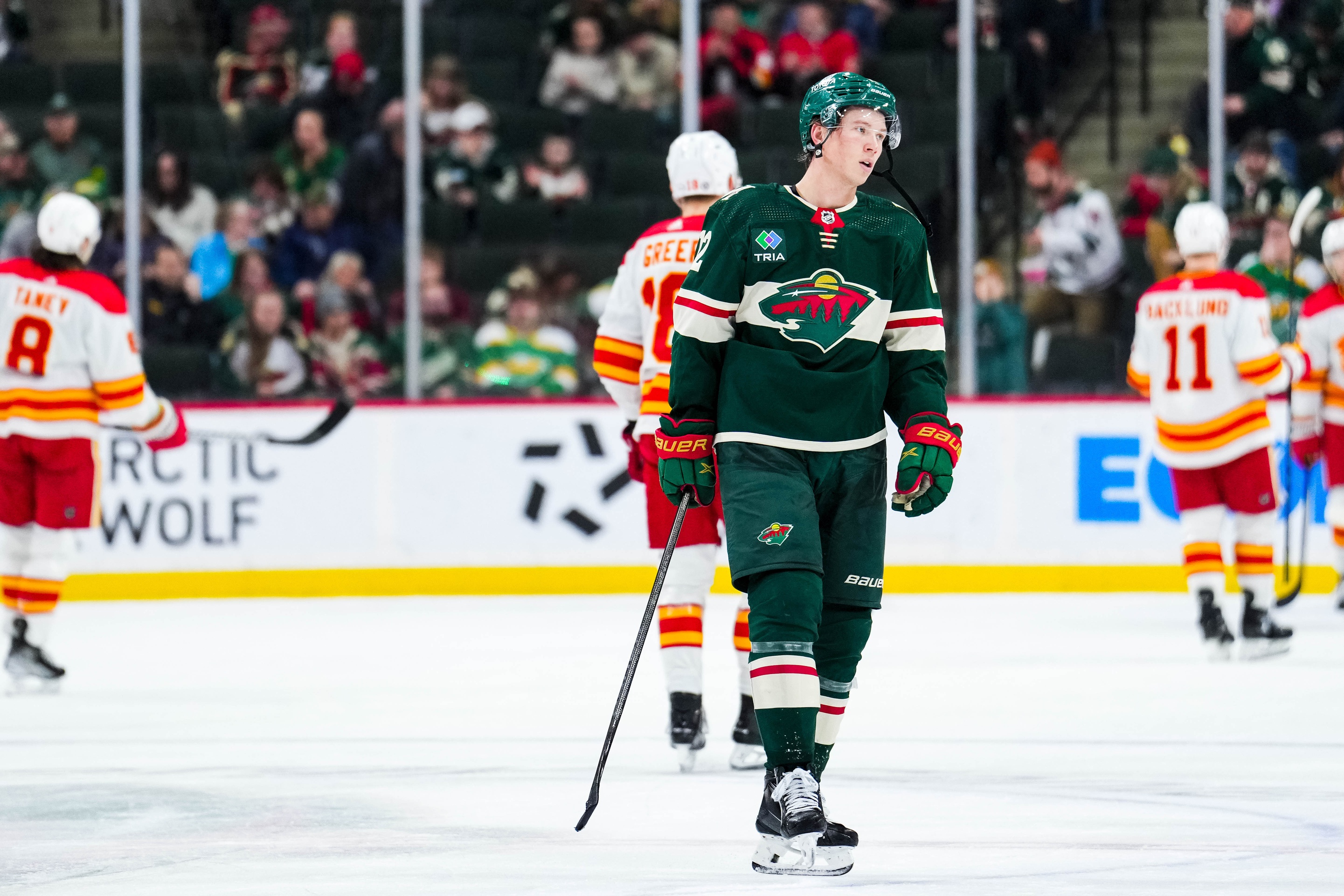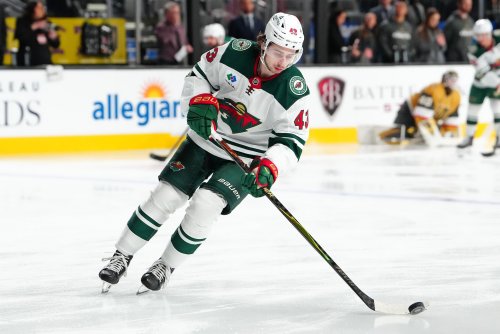
Rather than living in a cycle of bad rosters and competitive windows, the Minnesota Wild want to build a contender by competing every year. By creating a roster that makes the playoffs every year, they only need one lucky year to make a deep run. It allows the team to constantly attract talent and fans because they aren’t trying to go through ugly rebuilding years.
But this season is the best argument against that strategy.
At the time of this writing, Minnesota is 12 points behind the Dallas Stars for third place in the Central division, with no games in hand. To make a wild card spot, they have to beat out all but one of the following teams:
- Nashville Predators, who are seven points back with two games in hand
- Arizona Coyotes, who are four points back with no games in hand
- St. Louis Blues, who are one point back with no games in hand
- Edmonton Oilers, who are three points back and have a game in hand
- Seattle Kraken, who are three points back with two games in hand
- Calgary Flames, who are one point back with one game in hand
Maybe the Wild will get lucky. One of those teams could succumb to a cold streak or a string of injuries. Unfortunately, Minnesota has been that team this year. Kirill Kaprizov is week-to-week, and they’ve placed starting goaltender Filip Gustavsson on IR.
It’s not Bill Guerin or the front office’s fault that injuries are derailing the season. But because of his theory on roster-building, any lost season impacts the team’s future.
A calendar year ago, Minnesota’s roster was wide open. The 2024-25 roster included only seven NHL regulars: four forwards (counting Marco Rossi) and three defensemen. Then he started extending most of his veterans.
Between April and October, the team extended Frederick Gaudreau (age 30), Marcus Johansson (33), Ryan Hartman (29), Marcus Foligno (32), and Mats Zuccarello (36). All of these players are important members of the team, but the Wild extended them into their mid-to late-30s. Few, if any, of these deals will age well. By definition, they’re borrowing salary cap space from future years to help the team win now.
If you don’t buy that, look at the end-of-life contracts currently on the books. Alex Goligoski and Jon Merrill are defensive liabilities, yet they remain in the lineup because of the team’s current cap constraints. And why do those constraints exist? Guerin bought out Zach Parise and Ryan Suter’s 13-year deals, which the Wild in a similar short-sighted effort to win immediately.
None of these contracts ruin the team, but the cycle seems to repeat itself. The Wild extend a veteran too deep into his 30s and hope that a projected salary cap increase makes the worst years of the contract tenable. Ultimately, the players Minnesota has extended end up as depth options.
Why would Guerin commit to older players? Because there’s a human element to the game. Counting up the dollars and cents doesn’t account for intangibles like locker room leadership or veteran on-ice experience.
On the other hand, reserving roster spots for veterans scares away young talent. Minnesota already saw the consequences of a logjam at center when Jack McBain left for Arizona. “McBain’s reason for seeking a new team was apparently that he felt the Wild were set at center for the foreseeable future,” The Athletic’s Michael Russo reported, “with Ryan Hartman on the top line, Freddy Gaudreau on the second, Joel Eriksson Ek in the first year of an eight-year contract and 2020 first-round pick Marco Rossi expected to make the team.”
McBain sought a trade to Arizona, where he’s currently on pace for 20 goals as their third-line center. Tell me that Minnesota couldn’t have used a player like that in last year’s playoffs to help replace Eriksson Ek when he got hurt.
A milder version of this story may be playing out now with Danila Yurov. He’s considering remaining in the KHL next season. While no extension is yet in place, he can sign with Minnesota or Metallurg Magnitogorsk in the summer of 2024.
The Athletic reported in July of 2023 that the team and Yurov planned for him to arrive in North America in the summer of 2024. But now Yurov is weighing his options despite playing like one of the best Russian talents in the world. Between then and now, something changed Yurov’s mind. For my money, it’s probably the lack of opportunity to make Minnesota’s NHL roster.
Yurov should be salivating over a chance to play in St. Paul and set himself up with a big payday. Instead, he’s wary of getting stuck in Iowa making an AHL salary. The front office can pretend they’re comfortable with their best prospect playing in Russia, but Yurov would make the Wild a better team in 2024-25.
The crazy part is that Foligno, Zuccarello, and Hartman were already under contract for this season, even before their extensions. The only reason to extend those three players in the calendar year 2023 was to prevent losing them due to a monster season in a contract year. Guerin extended them to create certainty at the cost of flexibility.
The trade-off is supposed to be that the Wild are a shoo-in for this year’s playoffs, even if there’s less room for young talent. Unfortunately, that “playoff lock” roster is so banged up that it's on the verge of missing the playoffs anyway.
Here’s the kicker: If Minnesota had signed only one or two of Hartman, Foligno, and Zuccarello, they could hedge a lost season by selling the remaining players on a contract year in return for prospects. Those players could help them win in the next two or three years.
While this year’s injury luck is an outlier, more than one team gets struck by the injury bug every year. Eventually, it had to be the Wild’s turn, which makes their conservative roster-building strategy so frustrating.
Again, Minnesota’s injury luck is not Guerin’s fault. But the team has no options to get anything out of this season if they miss the playoffs. That was Guerin’s mistake.
Sure, a rebuilding team can suffer the same fate, and so can a contender. But if a team is rebuilding, a down year just improves their draft pick. When a true Stanley Cup contender loses a season to injuries, at least they get to look forward to the team contending again the following year. The Colorado Avalanche are a great example of this -- their team was decimated last season, but they’re right back in the mix for a President’s Trophy this year.
If Minnesota misses the playoffs, they’ll still probably finish with somewhere between the 10th or 20th pick. That leaves fans little to look forward to in the draft or next season, especially if those extensions steer Yurov back to the KHL next year.
What’s more? Part of the appeal of a compete-every-year strategy is that fans never have to sit through an ugly season. In 2023-24, Minnesotans have had to sit through it anyway.
If that’s not enough to question this roster-building strategy, entertain a simple thought experiment: imagine where this team would be without Marco Rossi and Brock Faber.
These two are fan favorites by the eye test, currently playing pivotal strategic roles on the team. By the numbers, Faber’s contributions have helped more in the standings than the injuries have hurt. If it weren’t for the emergence of their star rookies, Minnesota would be outside of a playoff spot even without injuries.
To credit the front office, they decided to lean on Rossi and Faber after seeing them up close in training camp. But the Wild had no cap space to explore other options. If that’s what it takes to discover your team’s second-best center and an elite defenseman, it’s a flawed development process.
That development process is a product of the always-win-now roster strategy. The Wild have filled the NHL lineup with veteran talent at a market rate rather than taking risks on young talent on cost-controlled contracts. It’s been a recipe for sustained access to the playoffs but minimal postseason success.
2024-25 could have been the season where an influx of cap space was reinforced by a slew of new prospects. Instead, Minnesota used that cap space to run it back with market-rate extensions for its veteran players.
The idea was to all but guarantee another playoff spot this summer by re-using the roster that had delivered a 100-point season in 2022-23, just one year older. Unfortunately, Wild fans are feeling the sting of that “all but” right now, and the price tag of those extensions won’t come down anytime soon.
All salary cap details courtesy of CapFriendly.com.
Think you could write a story like this? Hockey Wilderness wants you to develop your voice, find an audience, and we'll pay you to do it. Just fill out this form.
-
 3
3




.thumb.jpg.3818a5c4985e878d5ecaf2e7234883d8.jpg)

Recommended Comments
Join the conversation
You can post now and register later. If you have an account, sign in now to post with your account.
Note: Your post will require moderator approval before it will be visible.